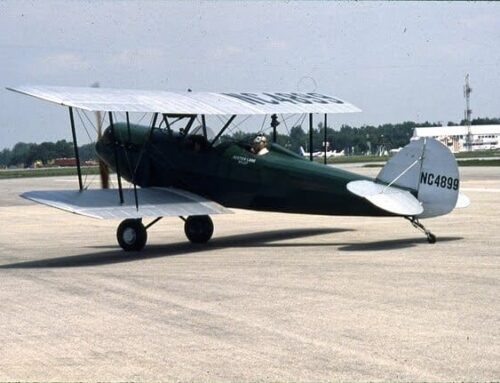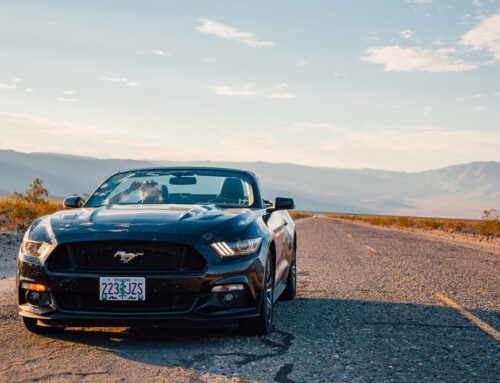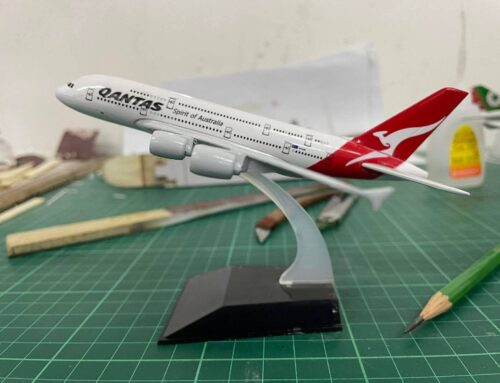The Lockheed SR-71 Blackbird is an iconic aircraft from the Cold War era, continuously captivating the imaginations of enthusiasts decades after its retirement. Designed and built by Lockheed’s Skunk Works division, this remarkable aircraft pushed the boundaries of aviation technology and capabilities. Its sleek, black silhouette and astonishing performance have earned a place in aviation history as one of the most extraordinary aircraft ever created.
Brief History
The genesis of the SR-71 dates back to the 1950s when the United States Air Force sought a successor to the U-2 spy plane. Lockheed’s Skunk Works, led by the legendary engineer Clarence “Kelly” Johnson, took on the challenge. The result was the SR-71, an aircraft designed to operate at speeds exceeding Mach 3 (three times the speed of sound) and at altitudes of over 85,000 feet. The SR-71 first took to the skies in 1964 and quickly gained a reputation for its unmatched speed and altitude capabilities. Over its operational life, it served as a crucial reconnaissance asset, providing valuable intelligence during some of the tensest moments of the Cold War. Despite advances in satellite technology, the SR-71 remained unparalleled in its ability to gather real-time, high-resolution imagery over denied territories. The SR-71’s service was not without its challenges and costs. Operating this advanced aircraft required a significant investment in both resources and training. Pilots underwent rigorous selection and training processes to handle the aircraft’s unique demands. Furthermore, each mission involved meticulous planning and coordination to ensure success and safety, given the Blackbird’s demanding flight profile and operational complexities.
Specs & Features
The SR-71’s design pushed the limits of engineering innovation. Constructed primarily of titanium, it was built to withstand the extreme temperatures generated by high-speed flight. The choice of titanium, a material capable of handling high temperatures and stress, was a pioneering move in aircraft construction. This material allowed the SR-71 to endure the frictional heat generated at high speeds, which could reach up to 1,000 degrees Fahrenheit on the aircraft’s leading edges. Its distinctive shape, featuring sharp edges and chines, reduced radar cross-section and contributed to its stealthy profile. The chines not only provided aerodynamic benefits but also played a crucial role in the aircraft’s radar-deflecting capabilities. This design was a precursor to modern stealth technology, highlighting the Blackbird’s ahead-of-its-time innovation. Powered by twin Pratt & Whitney J58 engines, the Blackbird could accelerate to speeds exceeding Mach 3.2, making it virtually impervious to interception. The J58 engines were a marvel of engineering, capable of transitioning from turbojet to ramjet operation, thus maintaining efficiency and performance at varying speeds and altitudes. This unique feature allowed the SR-71 to sustain high-speed flight for extended periods, a necessity for its long-range reconnaissance missions. Its reconnaissance equipment included advanced cameras and sensors capable of capturing detailed imagery from vast distances. The optical and infrared cameras, along with side-looking radar, enabled the SR-71 to gather intelligence over large areas with unprecedented clarity and precision. This suite of sensors could operate day or night, in all weather conditions, providing invaluable intelligence data. Despite its incredible performance, the SR-71 posed numerous challenges to its pilots. Operating the aircraft required extensive training and skill due to its demanding flight characteristics. Pilots also had to contend with the physical toll of flying at extreme speeds and altitudes, often enduring intense heat and cold throughout their missions. The flight suits worn by SR-71 crew members were akin to space suits, designed to protect against the harsh conditions encountered at high altitudes.
Frequently Asked Questions
Q: How fast could the SR-71 fly?
A: The SR-71 could reach speeds in excess of Mach 3.2, equivalent to over 2,200 miles per hour. This phenomenal speed allowed the aircraft to outrun potential threats, including surface-to-air missiles.
Q: How high could the SR-71 fly?
A: The Blackbird could operate at altitudes exceeding 85,000 feet, well above the capabilities of most contemporary aircraft. This high altitude enabled it to avoid conventional anti-aircraft measures and provided a vantage point for its reconnaissance missions.
Q: Why was the SR-71 retired?
A: Despite its unparalleled capabilities, the SR-71 was retired in 1998 due to changing geopolitical dynamics and budgetary considerations. Additionally, advances in satellite technology made some of its reconnaissance functions redundant. The high operational costs and the emergence of new technologies influenced the decision to retire this iconic aircraft.
Q: Is there anything comparable to the SR-71 today?
A: While there are modern reconnaissance aircraft and drones, none match the SR-71’s combination of speed, altitude, and range. Current technology focuses more on stealth and unmanned operations, which offer different advantages but lack the sheer speed and altitude capabilities of the Blackbird.
Conclusion
The Lockheed SR-71 Blackbird remains a testament to human ingenuity and engineering excellence. Its groundbreaking design and unmatched performance cement its status as an enduring icon of aviation history. Though no longer in active service, the legacy of the Blackbird lives on, inspiring future generations of engineers, pilots, and aviation enthusiasts. As we look to the skies, we can’t help but marvel at the audacity and innovation that gave rise to this legendary aircraft. The SR-71’s contributions to aviation and reconnaissance have left an indelible mark, reminding us of a time when pushing the boundaries of what was possible was not just a goal, but a necessity.



